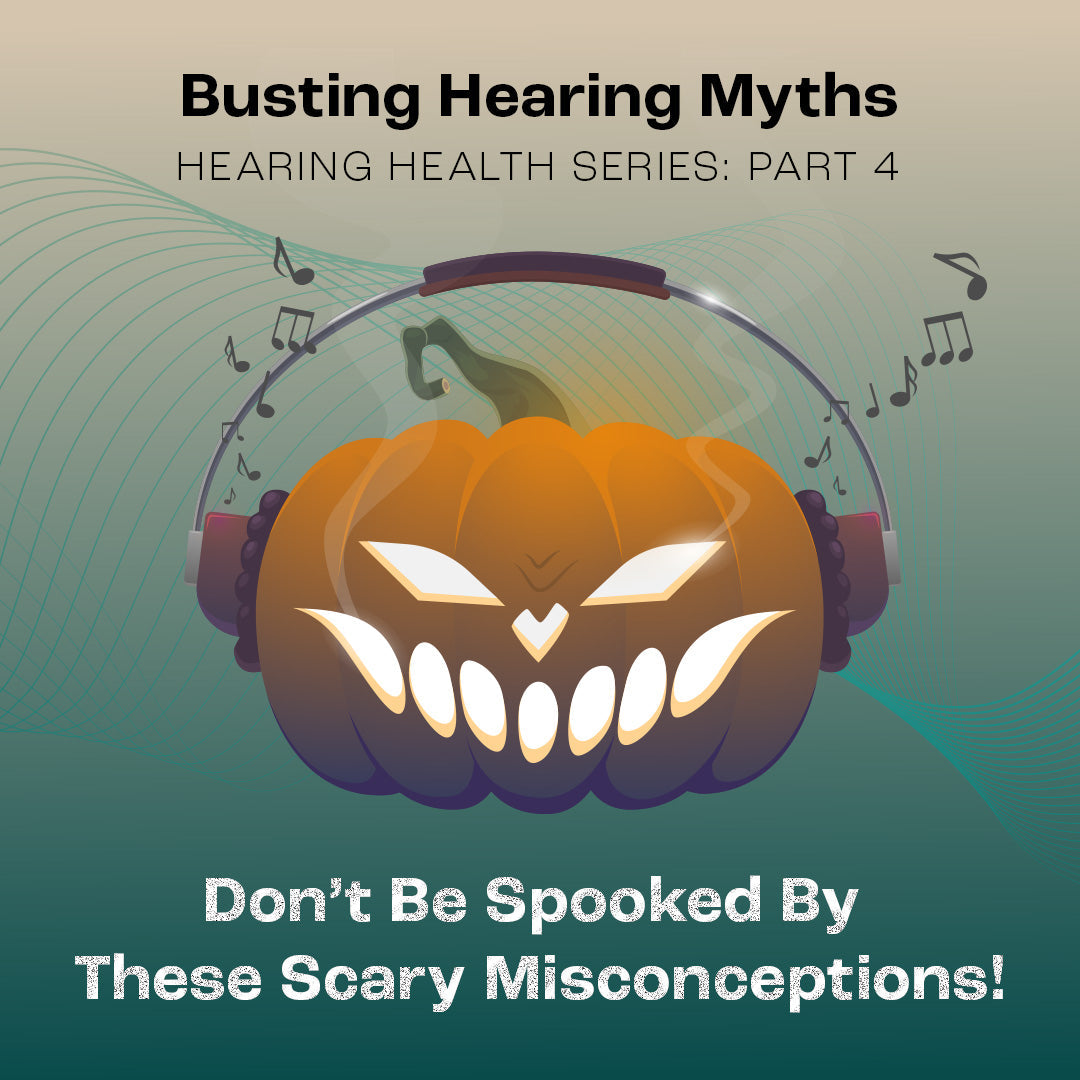Originally published in Audiology Now – Issue 97
Reprinted with permission from Audiology Australia
By Dr. Ian O’Brien
Research Audiologist, Audeara
Today’s headphones and earbuds are capable of far more than ever before. Consumers are increasingly enjoying the extended benefits of these devices, and hearing-impaired consumers are also benefiting from the technology when fitted as an assistive listening device (ALD). This article will explore some of the recent advances in consumer audio technology, discuss challenges these advances may pose, and consider the hearing professional’s role in this technology's delivery.
Merging technology
For many years now there has been an obvious blurring of the lines between hearing aids and personal consumer audio products. Hearing aids have steadily been offering more and more in the way of connectivity and streaming, while many consumer audio products now ship with ‘hearing aid’ features as standard1.
Hearing aids are the gold standard for the amplification of speech and communication. Technologies and approaches used in hearing aids are now being applied to areas such as streamed media in consumer devices, helping to improve listening experiences for listeners of all abilities. While the broader availability of this technology has encouraged the development of a range of ‘hearables’ marketed for everyday use, we have also seen some great new functionality improvements across the headphone and earbud space generally.
So what’s new?
While usually sounding great out of the box, today’s consumer audio is all about personalisation — a few moments spent in set-up can yield huge improvements to the user’s listening experience. This ‘tailored’ listening experience is made possible through advances in audio processing technology, giving product developers the ability to innovate in ways previously only available to hearing aid manufacturers.
Some of the more popular consumer audio chips now provide as many as 50 bands of personalisable, non-linear audio processing per ear. Combined with sophisticated dynamic noise management features, multi-microphone beamforming, impulse noise reduction, feedback management, as well as fully customisable attack, release and MPO settings for each band, the specifications list looks uncannily similar to that of a modern hearing aid.
Some of today’s audio chips can also accurately generate their own pure tones, enabling the development of reliable, quick and easy approaches to determining the user’s hearing profile without the need to calibrate external tone generators.
For connectivity, AuracastTM is fast becoming the ‘new normal’ (www.bluetooth.com/auracast). Although a long time coming, Auracast is not just another Bluetooth protocol. For those unfamiliar with Auracast, it is probably best understood as a radio station that anyone nearby with an Auracast- enabled device can tune into, similar to the loop systems used in the past but with greater accessibility, improved privacy and better quality audio. The implementation of Auracast will benefit individuals with hearing loss as well as people of all hearing abilities.

Above: Photos from Audeara’s ‘World Hearing Day’ silent disco.
Uses for this technology in public spaces such as galleries, transport hubs, stadiums and within educational settings are all but limitless. To help demonstrate this technology, Audeara launched the first AuracastTM-accessible event in Australia at the recent Hearing Business Alliance conference in Perth. Attendees had access to an Auracast broadcast throughout the day, which they could tap into on their Auracast-enabled devices. In fact, at Audeara we have been having fun with this technology for some time as we have explored its capabilities, recently using it to run a silent disco for World Hearing Day at Audeara HQ in Brisbane.
Direct-to-client devices
These developments are bringing great benefits to those with hearing difficulties, revolutionising product offerings and instigating industry-wide changes. We can now find products for sale online and in the local hi-fi store that are able to do many of the things that were previously the sole domain of hearing aids1.
Consumers are now able to take a relatively accurate hearing test using a device’s app, and have the device provide personalised pass-through of ambient sounds as well as media, complete with super-high-speed processing, noise management, directional microphones and compression across dozens of bands. Indeed, most devices on the market (including the ever-expanding ‘OTC’ and ‘hearable’ suite of products) seem to specialise in direct-to-client solutions. While undeniably convenient and cost-effective for the consumer, there are some things to consider.
First is the technological gateway: the user is required to be at least partially ‘tech-savvy’ in order to take advantage of features such as navigating built-in hearing tests and set-up protocols. Second is the risk of misleading information in the market, which can set unrealistic expectations and may lead consumers to believe these devices are a cheaper alternative to clinically validated hearing aids. This can result in disappointment and delay in seeking necessary professional advice and treatment for their hearing health needs. Hearing professionals should be aware of issues that remain a challenge with hearables and where hearing aids excel, such as occlusion, battery life and form factor2.
At Audeara, we put a great deal of effort into ensuring that the information we provide to all stakeholders clearly sets expectations of our product offering. We know that people with hearing loss wait an average of 10 years before getting help for hearing loss3 and if audiologists can offer a solution to clients who are not ready for hearing aids, it can be a ‘stepping stone’ for the client to start experiencing personalised sound.
As we know, the best person to advise clients on their hearing needs is their hearing health professional so Audeara works closely with clinicians and their support staff. Our technology and product suite are heavily informed by our daily conversations with front-line providers in Australian and international markets.

Above: Clinician using Audeara’s AudAssist Desktop.
Uniquely, we provide hearing professionals with specialised tools to assist with device set up. Our desktop application ‘AudAssist’, for instance, features tools such as audiogram import or entry, fine tuning, CROS compatibility and client demonstration modes. These tools can help to bridge the gap between self-fit hearables and hearing aids fitted with traditional audiological support, giving hearing professionals more scope to help clients who may not be ready for the next step in their hearing journey.
Why fit an ALD?
There are many reasons to fit an ALD. The client may not be ‘ready’ for hearing aids for one reason or another, they may be challenged with effusive ears or skin conditions affecting the ear canal, or there may be a cognitive or physical impairment causing issues with a hearing aid fitting.
As highlighted by Bothe et al.2, ALDs in the form of hearables may also be successful in assisting some of the large percentage of people with mild hearing loss who would otherwise not be considering hearing aids, or in breaking down barriers for first-time users4.
With so much to offer the user, a well-structured hearing rehabilitation plan should consider including one of today’s ALDs. Audeara’s products are designed to help everyone enjoy great, personalised sound regardless of their hearing ability, and we are very proud of our role in supporting hearing professionals to help people feel connected.
FAQ's
 |
Am I wasting the HSP voucher by fitting an ALD to a client who is not ready for a hearing aid? |
|
No. Our research shows only a small percentage of clients who leave the consultation room without being fitted with any device will return for a subsequent fitting regardless of whether they a private or voucher client. It is important that ALDs are considered and discussed as part of the solution for all clients, but this may be particularly helpful for those who are just not ready for a hearing aid. |
|
If I fit a client with an ALD under HSP, don’t I need to wait 5 years before fitting with a hearing aid? |
|
|
No. Under the Eligibility Criteria for Refitting (ECR Criteria 5), if there is a ‘change in client circumstances that indicates hearing aid fitting’ the audiologist is able to request a revalidated voucher and refit the client. Audiologists often report to us that following an ALD fitting (which includes personalising the device to the client’s hearing profile), the client will experience the difference in hearing the TV, phone calls and music and often realise what they are missing out in other areas of their lives. |
References
- Chen, C. H. et al. (2022). EClinicalMedicine, 46, 101378.
- Bothe, E. et al. (2024). IJA 1–10. Davis, A. et al. (1992). Hearing impairments in middle age.
- Davis A. et al Brit J Audiol 26(1) : 1-14
- Amlani, A. M. et al. (2019) Amer. J Audiol. 28(1), 125–136.


